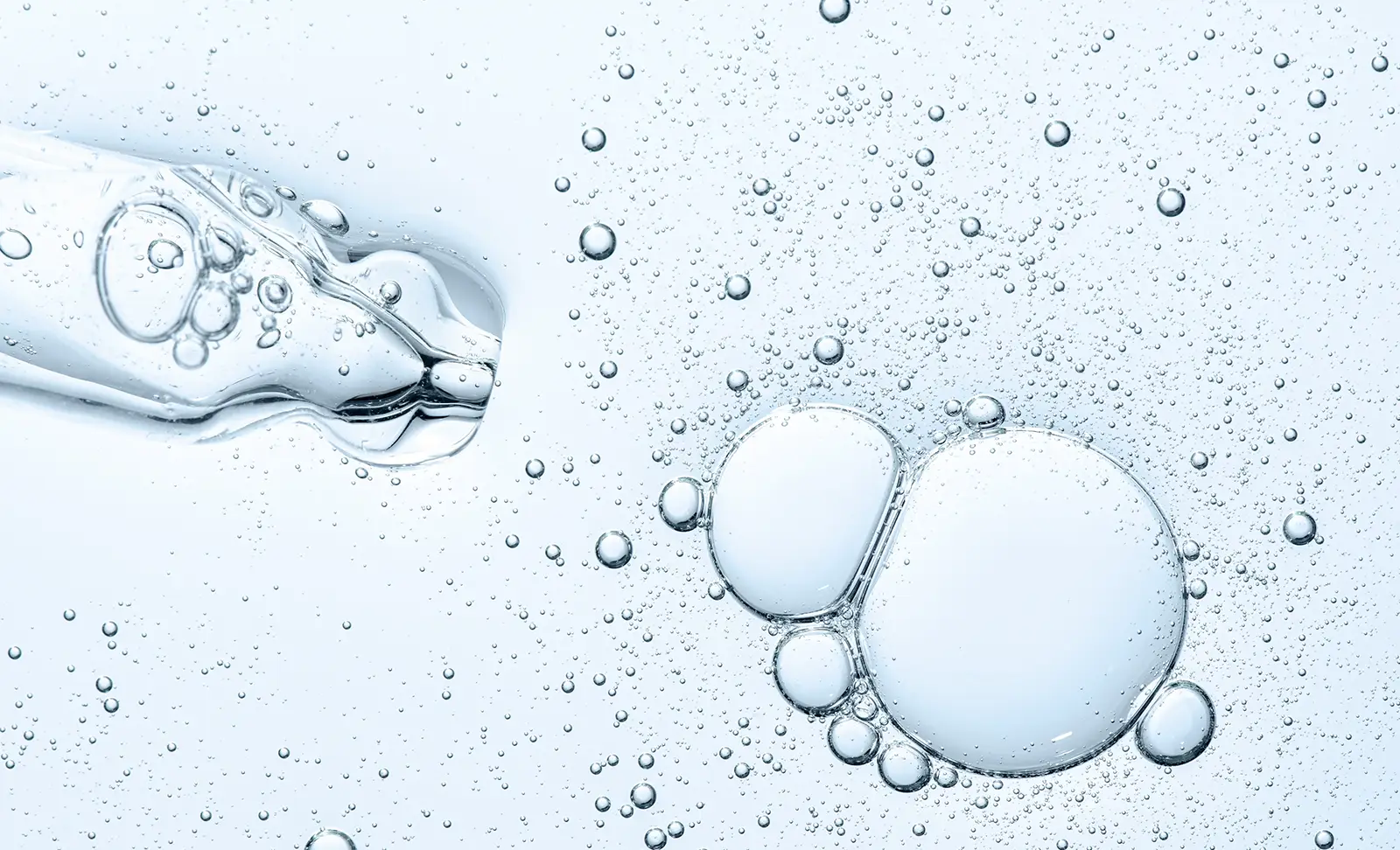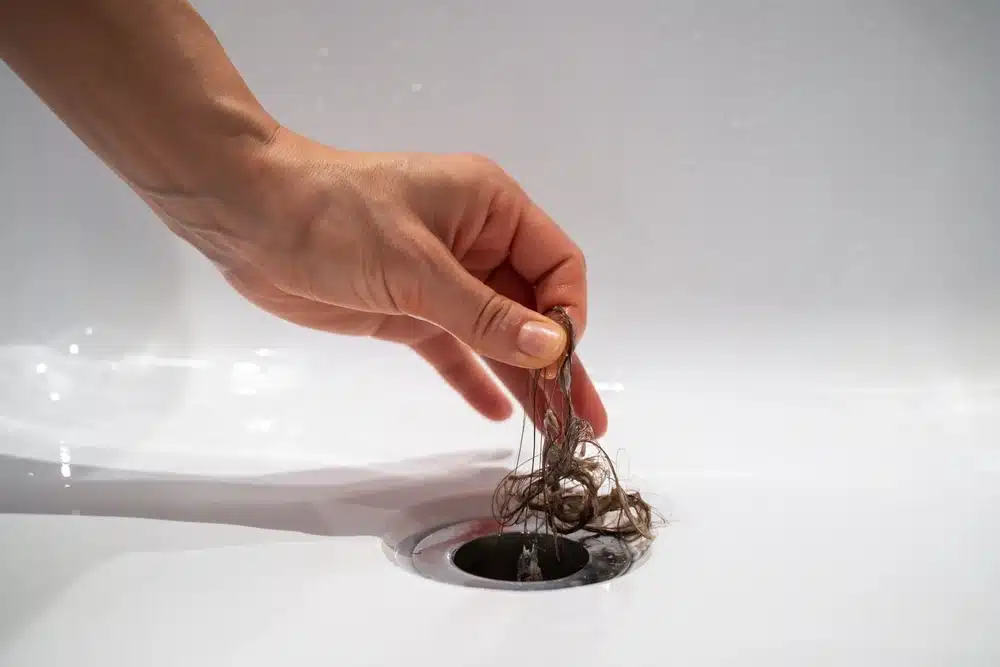Glycolic acid is typically used on the skin as an exfoliator, but it can also be effective when used on the scalp. There are some pros and cons associated with using glycolic acid specifically for hair loss – for example, while it’s good for controlling an oily scalp, there are some potential side effects like irritation.
- What is Glycolic Acid?: Glycolic acid is an alpha hydroxy acid (AHA) that comes from sugarcane. It’s a common ingredient in skincare as it acts as a chemical exfoliant.
- Does Glycolic Acid Help with Hair Growth?: Glycolic acid may be helpful for promoting hair growth as it contributes to a healthier scalp environment.
- Can You Use Glycolic Acid on the Scalp?: Yes, you can use glycolic acid on the scalp. When applied to the scalp, it will exfoliate the area, leading to a cleaner, healthier scalp overall.
- How Do You Use Glycolic Acid on the Scalp?: To use on the scalp, use it as a pre-shampoo treatment. Simply apply to the scalp and leave on for about fifteen to twenty minutes before completing your usual hair washing routine.
Glycolic acid is usually used as a skincare treatment as a chemical exfoliant. However, in recent years, it has been used more and more on the hair, with people on social media sharing the benefits of using glycolic on the hair and the results they have experienced by doing so. The question is, is there any scientific reasoning behind this, or is it a waste of time (and money)? Here, find out all you need to know about using glycolic acid on the scalp and locks, including the pros and cons. You might find it’s the hair solution you’ve been looking for!
What is Glycolic, and What is it Used for?
Let’s begin by understanding what glycolic is and its primary purpose. Glycolic acid is an AHA (alpha hydroxy acid) that derives from sugar cane. It’s commonly used on the surface of the skin as an exfoliant, where it removes the top layer of skin cells. This can be beneficial for reversing sun damage, fading acne scars, and targeting acne. It’s pretty effective, too, with glycolic peels being shown to be as effective as tretinoin peels [1] and many certified dermatologists recommending the stuff to their patients.
Glycolic acid is used on the face as part of a skincare routine. It should be used in the evening after cleansing and before thicker skincare products such as an oil or moisturiser.
Can You Use Glycolic Acid on the Hair?
What about the hair? Glycolic acid is sold as a skincare product, but that doesn’t stop people from using it for other purposes. Specifically, the scalp.
Currently, there hasn’t been much research into how glycolic acid can benefit the hair, but looking at the properties of glycolic acid, you can see how it may help boost hair growth and health as a whole. In particular, glycolic acid exfoliates the skin, which means that when applied to the scalp, it will remove dead skin cells and potentially encourage new hair growth. It can also combat too much oil production on the scalp, too.
Regarding safety, you most likely won’t have any concerns when using glycolic acid on hair, particularly if you use a lower-concentration product. Typically, the type of glycolic acid you can get in shops is at around 5-7% concentration, with higher concentrations (like ones used in face peeling) administered by clinicians. Of course, there are some circumstances where glycolic acid on the scalp is not recommended and may cause damage, such as if a person has sores on their scalp.
The Pros and Cons of Using Glycolic Acid for Hair
Here, we’ll go into the benefits of glycolic acid on the hair (as well as the downsides) so you can decide for yourself whether it’s worth using.
The Pros of Glycolic Acid for Hair
It’s Hydrating
Your hair needs lots of moisture and hydration to look great, and glycolic acid can help with that. That’s because glycolic acid helps other hair products penetrate the shaft more deeply, meaning you can use hydrating hair products following a glycolic acid treatment for better results.
It Exfoliates
Glycolic acid has exfoliating properties (which is why it’s so popular to use on the face). When used on the scalp, it will help clear flakes, making it particularly good for flaky scalps. Plus, the exfoliation means the hair follicles are less likely to become clogged.
The Anti-inflammatory Properties
Some research shows that glycolic acid may be anti-inflammatory, too. So, if someone has inflammation on their scalp, glycolic acid might be able to help with that.
It’s Good for Oily Scalps
For people with oily scalps, glycolic acid can help tone that down. In turn, this can help people dealing with something like dandruff, as excessive oils often contribute to that. Then, there are people who don’t want to get greasy hair just a day after washing it, and glycolic acid may be useful there.
It Can Reduce Breakage
Many people experience hair breakage, making it difficult to grow the hair thick and long. Glycolic acid can nourish and hydrate the hair, which, in turn, prevents tangling, making it easier to style the hair without it breaking off.
It’s Cheap and Simple to Use
Glycolic acid is pretty cheap – you can find a bottle of 7% glycolic acid for under £10. It’s also easy to use; you apply it to your hair and scalp, wait a short amount of time, and then rinse out in the shower, washing your hair as you usually would. We’ll go into precisely how to use it further down!
The Cons of Glycolic Acid for Hair
It Can Irritate Some People
In some cases, glycolic acid may cause more harm than good. People who have a very dry scalp, spend a lot of time in sunlight, have sores on the scalp, or generally have sensitive skin may experience issues with it.
Using Too Much Can Lead to Chemical Burns
The last thing you want is chemical burns on the scalp. In some cases, using too much glycolic acid can lead to just that, which could, in turn, cause more hair loss. That might be due to using it too frequently, leaving it in for too long, or using a much too high concentration. As a general rule, you should stick to glycolic acid of 10% concentration or lower when used at home – anything above that should be under the care of a professional.
It Isn’t Usually Designed for the Hair
Currently, you can’t find many examples of hair glycolic acid. This may put some people off using this AHA, as they want to know that a product has been specifically formulated for the body part they intend to use it on.
There’s No Scientific Proof of its Hair Growing Abilities
As of right now, there are no studies suggesting that glycolic acid actually helps people regrow their hair. However, that isn’t to say it doesn’t – it hasn’t been proven either way. Due to this, many people prefer trying a more scientifically proven hair loss treatment.
How to Use Glycolic Acid
Have you been convinced to use glycolic acid in your hair care routine? Here’s how to do it.
- Find the Right Product
First, look for the right kind of glycolic acid product. There are some hair products specifically with glycolic acid you can use. However, many people use The Ordinary’s Glycolic Acid Toner on their scalp as it’s cheap and does the job nicely.
- Apply to the Scalp and Hair
Apply the glycolic acid straight to your dry hair, focusing more on the scalp.
- Leave On for 10-20 Minutes
Leave the glycolic acid on your scalp for 10-20 minutes as a pre-shampoo treatment.
- Wash Out
Finally, wash the glycolic acid out, shampooing and conditioning your hair as usual.
That’s it! Only do this once or twice a week, as exfoliating your scalp too often may cause more damage.
Is Glycolic the Hair-Growing Solution You’ve Been Looking for?
There is no denying that glycolic acid has some pretty good benefits for the skin and, in turn, the scalp. The question is, will it regrow your hair? While it might help create a healthier scalp and prevent some breakage, it likely won’t regrow your hair if you’ve been experiencing hair loss. In this case, you’ll want to pinpoint the exact cause of your hair loss and find an appropriate solution. We can help you – download our hair track app to learn more and contact our hair restoration experts.
Consider Other Hair Restoration Options
Whether you have androgenetic alopecia, telogen effluvium, or alopecia areata, there are hair restoration solutions to help you. Hair loss medications such as minoxidil, finasteride, and dutasteride are particularly common and helpful for people with androgenetic alopecia (male/female pattern baldness), with minoxidil able to help both men and women and the latter too specifically for men. Other solutions include things like low-level laser therapy, steroid injections, and hair transplants. A hair transplant is a particularly effective method that involves taking hair follicles from one section of the scalp and transplanting them to another. The results are pretty incredible, with people with significant hair loss able to grow a full head of hair just months after the procedure.
Glycolic Acid for Hair Loss: In Summary
Glycolic acid has many beneficial properties that can help the hair and scalp. It’s an exfoliator, meaning it will clear up dead skin cells, flakes, and other debris on the scalp. Plus, there are potential anti-inflammatory properties. There is little risk of using it on the scalp (assuming you follow proper instructions), so it’s worth trying – however, don’t expect miracles regarding hair growth, as it’s unlikely to be able to grow back large sections of hair.
If you’re interested in a more results-driven and proven hair restoration solution, contact the Harley Street Hair Clinic today. We have a patients gallery to show just how effective our solutions are!
Sources:
- https://www.sciencedirect.com/topics/medicine-and-dentistry/glycolic-acid#:~:text=Glycolic%20acid%20peel%20(70%25),the%20latter%20being%20more%20tolerable.&text=In%20comparison%20to%20TCA%20peel,relapse%20in%20the%20TCA%20group.




